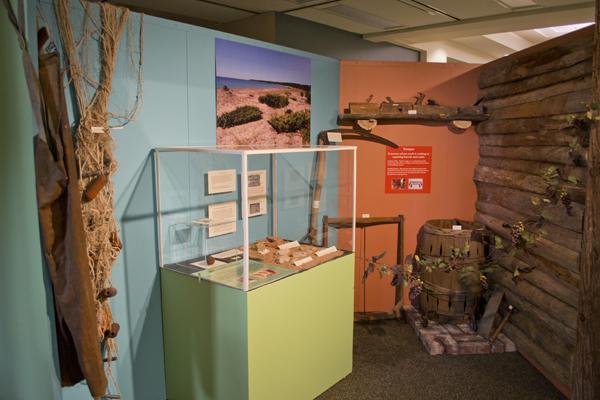The Beaumier Heritage Center, located in 105 Cohodas, provides a look back in history of a lost colony, from archeological findings from NMU students in its “Scattered to the Winds” exhibit.
Scott Demel, professor of anthropology, led the students in the archeological digs as part of the course Museum Studies II (AN495).
The students put together the exhibit, deciding which artifacts and fragments they wanted on display, as well as contributing to the layout and creation itself.
They were granted a lot of freedom, as Daniel Truckey, director and curator and Demel gave advice and made certain the exhibit the students were creating was up to par with museum standards.
“It’s the history of Beaver Island in Lake Michigan, based on archeological digs that NMU faculty and students did for the past couple years,” Truckey said. “The focus is on a fishing village that disappeared in the mid-19th century, the history of that village and what’s left behind.”
The exhibition was funded by the Michigan Humanities Council, which provided a $15,000 grant for the creation of the exhibit.
The fragments of artifacts found by students are supplemented by complete artifacts, on loan from museums and historical societies such as the Beaver Island Historical Society.
However, the exhibit panels, research, layout and design were all created by NMU.
“It was an Irish fishing village,” Truckey said. “That is sort of why it disappeared. A large Mormon community developed on the island in the 1850s and basically took control of the island under direction of the leader Jesse Strang.”
King James Jesse Strang, as he was known by his followers, forced everyone off of the island who was a non-believer, either rejecting his rule or refusing to convert to Mormonism
“He forced off villages at Cable’s Bay,” Truckey said. “The village literally vanished into the sand dunes, consuming all of the architectural buildings.
“There’s nothing there anymore except for what’s under the ground.”
The artifacts are as recent as being from the late 19th century. The island had different periods of occupations, so some artifacts are older due to the variance in time frame.
“Everything from fishing artifacts to Native American artifacts, household items [and] tools,” Truckey said. “It’s a real gathering of material of culture from sights where they did their digs.”
Demel started his digs years ago, and in the summer of 2010 was when the students made their first trip out there.
“There are tons of archeological fragments,” Truckey said. “Just dozens and dozens of fragments and artifacts (are on display).”
The exhibit, which is free for public viewing, will remain on display until September 1.
The museum will be open for the public from 10 a.m. to 4 p.m., Monday through Thursday and Saturdays through August.
For more information, call (906) 227-3212 or e-mail heritage@nmu.edu.

























